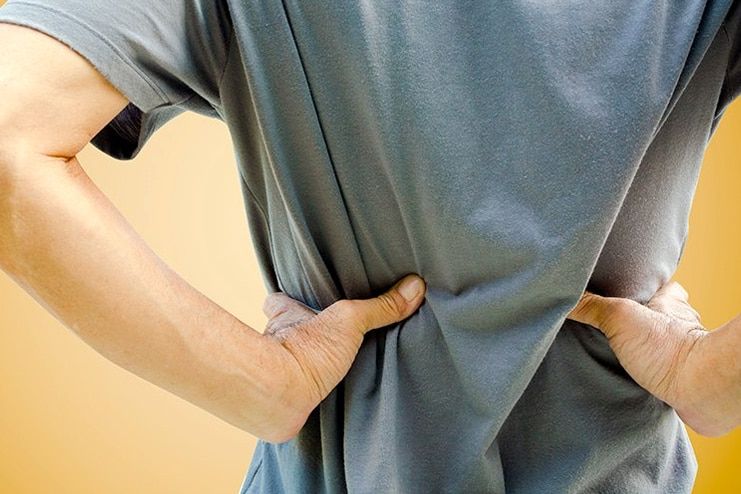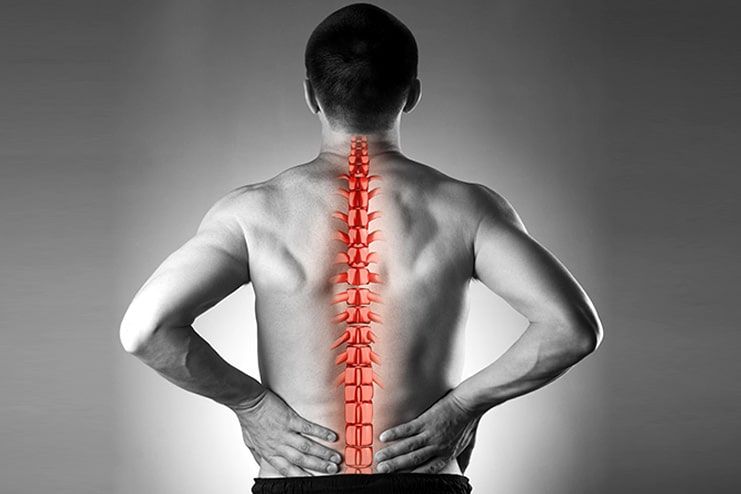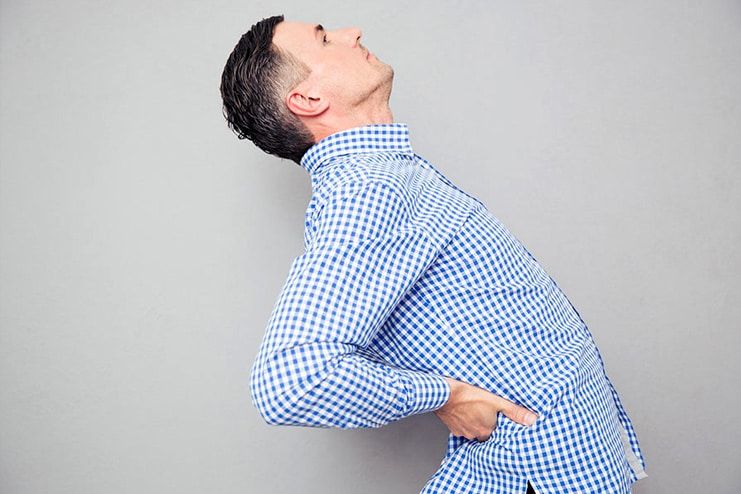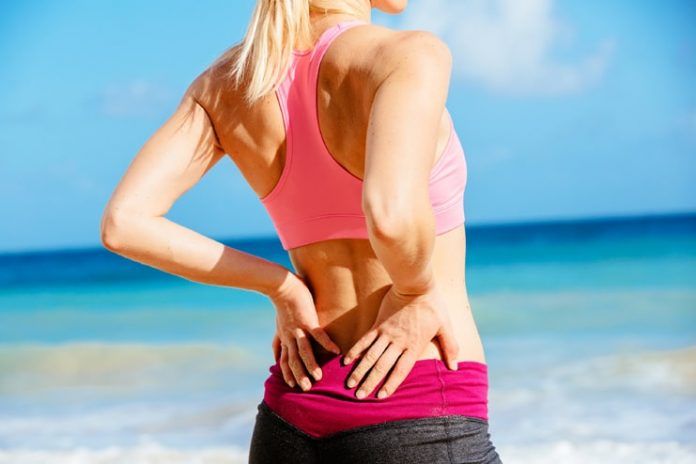Affiliate Disclaimer
Some links in this article are affiliate links. We may earn a small commission if you make a purchase through these links, at no extra cost to you. We only recommend products we find useful to our readersMany people tend to wake up in the morning and the first thing they do is crack a part of their body, it could very well be the knuckles, shoulder joints or even any other part of the body. Cracking your back after waking up in the morning is a very common thing that around 45% of the world’s total population (R) indulges in.
You are possibly one of them?
Don’t get stressed out as to why you do it and what the implications could be, rather, it is best to ensure that you know the ins and outs of the same to be safe than sorry. Cracking back is very common to relieve the stress in the back region, either after sleeping or even sitting for long periods of time.
In this article, we are going to walk ourselves through the dynamics, the good as well as the bads of popping your back. If you have been sitting for a long time, stand up and crack your back a little and relish the feeling of pleasure much like the rest of the 45% of the world population.
Know a Bit about Your Back First

Before we jump headfirst into learning about the common dynamics of cracking back sideways as well the benefits and side effects that it brings along with it, it is necessary to very well understand your back first. It is necessary to understand the components that make up your back as well as the parts of the back that are often at potential risks while you are cracking your back.
The spine is located down the centre of our back which acts as a scaffolding for the entirety of the body. It is what helps protect the spinal cord which holds all the necessary neurons (both sensory and motor) that are used for transmissions of signals in and around the body. The entirety of this structure is covered with a bony protective covering known as the vertebrae.
Any average person is born with 33 vertebrae in their body which later transforms down to 24 because of the fact that a number of bones in the lower part fused together over the course of time. There are 6 sections of the vertebrae – cervical (7), thoracic (12), lumbar (5), sacral (5), coccyx (1). All of these sections are tied along to each other with discs which are there to provide the entire structure with some much needed cushioning. From there, the vertebrae connect to the muscles and tendons throughout the entirety of your back.
What Happens When you are Cracking your Back?

When it comes to talking about why it actually feels so good or what exactly happens when one cracks their back is a matter of theories and nothing conclusive. Several doctors are even in the dark as to what it is that exactly happens that makes one’s back crack with that significant popping sound.
One of the most common theories that are talked about the majority of the people is the fact that the accumulation of gas in the area around the back is what makes the cracking sound.
There are three parts to this theory, backed by scientific evidence to prove what actually happens when while cracking back or any other part of the body, for that matter. One which was conducted back in 1947, the second one 24 years later after the first one and the latest (and the most believable one) in 2015.
For the first trial:
In the year of 1947, two doctors from the St. Thomas Hospital in London wanted to find out the correlation (R) between the reason and the happening behind the popping your back or any other part of the body for that matter. Their simple objective was to source the reason as to why the joints crack.
In order to understand the mechanism behind the same, the doctors tied a string around the fingers of a number of volunteers and pulled the string till the point that they heard the knuckles crack and this moment was captured using an X-ray machine.
In the end, they concluded for a fact that the entirety of the process of joint cracking was possible when the two respective joint surfaces were pulled apart from each other. This specific phenomenon caused a rapid drop in the pressure exerted by the synovial fluid which contributed to the formation of gas bubbled in the cavity.
For the second trial:
24 years later after the conclusion is drawn from the first trial conducted by the two doctors from the St. Thomas Hospital, a group of researchers conducted an extensive study to find its relevance and factual truth. The entirety of this study was based upon the approach that was administered in the first trial.
The group of researchers concluded saying that it was not the formation of the bubble in the cavity that caused the popping sound, rather the bursting of this formed bubble that actually was responsible for the sound that we hear from cracking back.
For the third and most recent trial:
The most recent trial (R) was conducted in 2015 by Gregory Kawchuk, who is a bioengineer and rehabilitation-medicine specialist at the University of Alberta in Canada. He was the one who had the leverage of using the ever-growing technology and finally wanted to put all the confusion concerning the cracking back sideways to a complete rest.
The only advantage that Kawchuk had was dynamically evolving technology. He leveraged the power of magnetic resonance imaging, otherwise known as MRI to keep a visual of the entire process of knuckle cracking until the point of it being slowly pulled apart.
And to everyone’s surprise, it was found the MRI results supported the findings that were concluded back in 1947 instead of the counteracting ones 24 years later. The cracking or the tell-tale popping sound is actually made when the bubble forms inside the cavity. This happens when the exerted tension on the joint mounts in the joint to a certain extent that the synovial fluid starts accumulating, followed by the formation of the cavity.
Once the cavity is formed, the gases present in the synovial fluid from the bubble which is what creates the significant cracking sound that we hear for the most part. This formed bubble in the cavity lasts for an extended time frame of about 20 minutes during which we can’t again hear that popping sound.

With all these trials and the theories and studies with the formation of a bubble being the reason behind the popping sound when the joints, it is not just the sole reason behind the sound or why the cracking happens when we stretch our joints and muscles. These kinds of sounds can also be produced because of the movements of the tendons, ligaments or even the joints when they return to their original position after being out of place. Even rough joints surfaces or the lacking quantity of synovial fluid in the joints often end up causing a grinding sound when they come in contact with each other.
Is Cracking your Back Bad for You?

Now to the most important aspect of this discussion, is cracking your back actually bad for you or is it a myth instilled by people?
As mentioned in the prior part of the article with the trials and the studies conducted in this regard, there are no visible adversities associated with pooping your back. If you have been listening to the telltale that the consistent cracking of the back will end up inducing arthritis in you, it is an old wives tale and not something conclusive supported by the studies.
In order to make everything crystal clear in every aspect of the possible side effects of cracking your back, we’ll be talking about two extensive studies that throw a clear shade on why this doesn’t have many negative implications, contrary to popular beliefs.
Study 1:
It was Dr Donald Unger who took the first initiative (R) to put a halt to all the telltales that his family, especially the women in his family, bestowed upon. According to them, cracking knuckles or back ended up causing arthritis. Fed up with all of these implications, Dr Unger was adamant on proving everyone wrong of their beliefs.
In order to create a starking result sheet, Dr Unger, for the next five decades, kept cracking his knuckles of one hand twice every day. For a comparable study, he didn’t crack the knuckles in his other hand. Following doing it every day for 50 years, he later tallied all of his results comparing the changes that both of his hands had after the study.
Later, after 50 years, he finally concluded stating that there was no apparent difference between the knuckles in both of his hands and that the possibility of inducing arthritis with consistent joint cracking is nothing but a complete myth.
Study 2:
The second study (R) for drawing conclusions about the side effects of cracking back or any joint for that matter was conducted by the Uniformed Services University of the Health Sciences. In their study, they had 250 subjects ranged between the ages of 50-89 years.
Amidst them, 20% of the subjects popped their knuckles and joints on a daily basis while the rest did it occasionally. As a conclusion to their study, they found that 18.1% of the people in the study who cracked their joints developed arthritis in their knuckles while 21.5% of people who didn’t crack their knuckles also developed arthritis.
This concluded the fact that there is little to no apparent connection of cracking your back or other joints with the possibility of developing arthritis because the odds of developing the same are almost equal in both cases whether or not your crack the joints.
With all that being said, it is delicate to understand that the effect that the cracking will have on the knuckles won’t be the same with that of the back or somewhere in close relation to the spine. Spine and the spinal cord are very fragile and prone to risks with just one wrong move. This is the reason why it is always suggested to go easy while cracking your back to avoid any kind of wrong implications, be it any form of tear or excessive pressure on the joints.
Not just that, even a study (R) conducted found a correlation between spinal manipulation and the strokes.
It is not the process of cracking back that tends to impose negative implications; it is the kind of pressure that one puts in the back is what might end up causing problems. The pressure on the associated ligaments, tendons and muscles can end up wearing out over time, thereby causing issues with the spine.
Why Does Cracking Your Back Feel So Good?

Whatever the reason and whatever the outcome, one really can’t deter from the fact that cracking the back is one hell of a satisfying experience which every person loves to experience.
That being said, why does one actually feel that feeling of satisfaction and comfort when cracking their back is the question.
While the scientists are very affirmed behind the actual reason on why the cracking back is actually a very comforting and satisfying feeling, it is believed that there could very possibly be three distinct reasons behind the same which have been proven using two different approaches.
Possibility 1:
The first reason that majority of the experts and researchers believe and emphasise on is the fact that the popping of your back or any other joint, in a general, helps relieve the pain, if there’s any. Back in 1965, two scientists, Ronald Melzack and Patrick Wall hypothesized the Gate Control Theory of Pain (R) which explains how the non-painful input is beneficial in putting a halt to the dissipating pain to other parts of the body.
Cracking your back is one such signal which helps in blocking the pain that you might be feeling after being sat for longer periods of time or suffering from any form of back pain. Not just that, it is also believed that there are certain points in the back whose cracking actually prohibits the pain from dissipating down to the other parts of the back.
Possibility 2:
Yet another possibility of why the cracking back actually helps relieve is the fact that the popping sound induces a feeling of fulfilment in the minds that what they are trying to achieve is taking shape.
In a study conducted (R) back in 2011, it was concluded saying that when people heard the distinct cracking or popping sound of the joints, it helped them correlate the same with a physical feeling of relief from pain which is what brings about the degree of satisfaction that we get.
Possibility 3:
This is a possible theory which doesn’t have much studies or researches to back the claims. It is believed that there is a release of endorphins when we crack our back or any other joints in the body. The release of endorphins is what end up providing a pleasurable feeling accompanied with satisfaction. There are not many hypotheses to back this claim up though.
To conclude it all, cracking your back or even just any other part of the body should always be done in moderation to ensure that the implications don’t subpar the level of satisfaction to reach to the pain. Make sure that if you are popping your back, you don’t apply a lot of excessive pressure that could possibly inflict completely opposite impacts rather than a feeling of pleasure and satisfaction.
In this Article






















